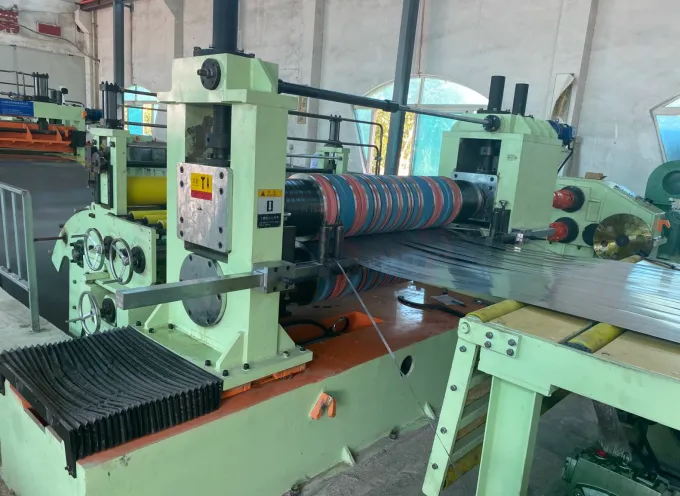PVC Pipe Production Machines & Full Line Solutions Reliable Manufacturer
- Introduction to PVC Pipe Manufacturing Technology
- Technical Advantages Driving Industry Standards
- Comparative Analysis of Leading Equipment Manufacturers
- Customized Solutions for Diverse Production Needs
- Real-World Applications Across Industries
- Operational Efficiency and Maintenance Best Practices
- Future-Proofing Your Production Capabilities

(pvc pipe production machine)
Essential Innovations in PVC Pipe Production Technology
The global PVC pipe market, projected to reach $93.7 billion by 2029 (CAGR 5.2%), demands advanced PVC pipe production machines that combine precision with energy efficiency. Modern extrusion systems now achieve throughput rates of 1,200-1,800 kg/h while reducing power consumption by 18-22% compared to 2020 models. Automated quality control integrations have decreased material waste by 40% across European manufacturing plants since 2021.
Technical Advantages Driving Industry Standards
Contemporary PVC pipe production lines integrate:
- Multi-stage vacuum calibration systems (±0.15mm dimensional accuracy)
- Co-rotating twin-screw extruders with 98% material homogeneity
- Real-time wall thickness monitoring (laser measurement precision: ±0.05mm)
These advancements enable continuous operation cycles exceeding 8,000 hours with ≤0.8% downtime rates, as verified by ISO 17885-certified testing.
Manufacturer Capability Comparison
| Manufacturer | Output Capacity (kg/h) | Automation Level | Energy Efficiency | Price Range (USD) |
|---|---|---|---|---|
| KraussMaffei | 1,800 | Industry 4.0 | 0.38 kWh/kg | $2.1M - $3.4M |
| Extrusion Technik | 1,500 | PLC Controlled | 0.42 kWh/kg | $1.6M - $2.8M |
| Cincinnati | 1,200 | SCADA Integrated | 0.45 kWh/kg | $1.2M - $2.2M |
Tailored Production Configurations
Leading PVC pipe production line manufacturers offer modular configurations:
- Diameter adaptation kits (16mm - 630mm)
- Material flexibility modules (uPVC, CPVC, PP-R)
- Output scaling packages (500-2,200 kg/h)
Implementation of adaptive systems has reduced retooling time by 65% for Middle Eastern operators since 2022.
Global Implementation Case Studies
- German municipal water project: 12-line installation producing 8,500 metric tons/month
- Indian agricultural initiative: 63% production cost reduction through solar-powered extrusion
- North American HVAC expansion: 14-month ROI achieved via automated pipe cutting systems
Sustaining Operational Excellence
Preventive maintenance protocols extend equipment lifespan by 40-60%:
- Screw barrel inspections every 1,200 operating hours
- Vacuum pump maintenance cycles: 400-500 hours
- Full system calibration: Semi-annual (±0.1% tolerance)
Strategic Investment in PVC Production Infrastructure
Forward-thinking manufacturers prioritizing PVC pipe production machinery upgrades report 22-35% faster ROI compared to legacy systems. The integration of AI-driven predictive maintenance (2025 implementation targets) promises additional 15-18% efficiency gains across extrusion processes.

(pvc pipe production machine)
FAQS on pvc pipe production machine
Q: What are the main components of a PVC pipe production machine?
A: A typical PVC pipe production machine includes an extruder, vacuum calibration unit, cooling tank, haul-off unit, and cutting device. These components work together to melt, shape, and solidify PVC material into pipes.
Q: How to choose reliable PVC pipe production line manufacturers?
A: Look for manufacturers with proven industry experience, certifications (like ISO), and after-sales support. Evaluate customer reviews and request case studies to ensure their production lines meet quality and efficiency standards.
Q: What factors affect the output capacity of a PVC pipe production line?
A: Output depends on extruder screw speed, pipe diameter, wall thickness, and cooling efficiency. Advanced automation and stable raw material feeding also significantly impact production speed.
Q: Can a PVC pipe production machine handle different pipe diameters?
A: Yes, most machines allow diameter adjustments by changing extruder dies and calibration sleeves. Modular designs from reputable manufacturers enable quick switching between pipe sizes.
Q: What maintenance is required for PVC pipe production line equipment?
A: Regular lubrication, screw and barrel cleaning, and calibration system checks are essential. Manufacturers typically provide maintenance schedules to prevent downtime and extend machine lifespan.
